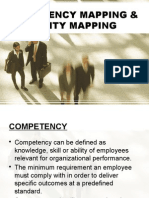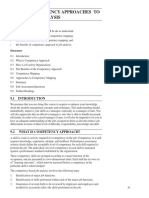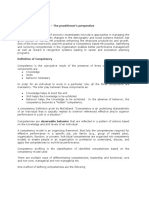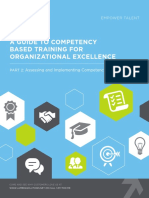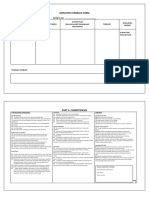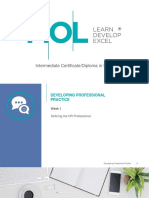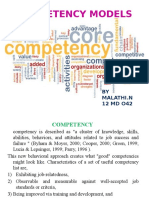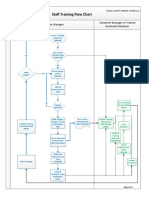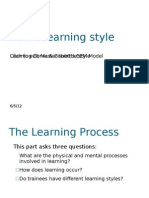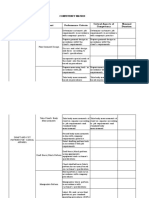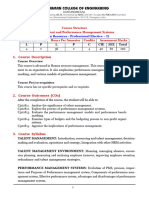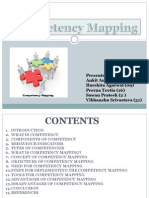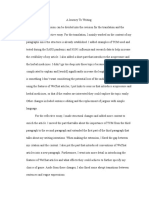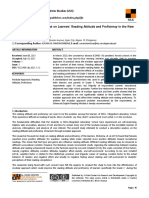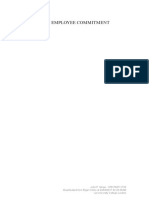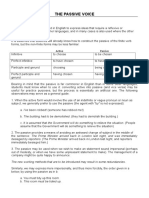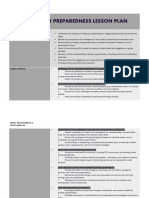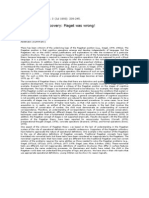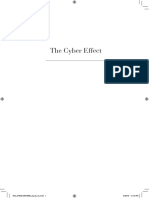Competency Mapping
Competency?
The word competency is derived from Latin word Competere which means to be suitable Competency can be defined as knowledge, skill or ability of employees relevant for organizational performance
�Competency is the employees capacity to meet or exceed a jobs requirement by producing the job output at the expected level of quality within the constraints of the organization, internal and external environment.
�CONCEPT OF COMPETENCY MAPPING
Personal Characteristics
Motive, Trait, SelfConcept & Knowledge
Behavior
Job Performance
�Nature of Competency Mapping
Any competency should be observable behaviour Competency should be repeatable behaviour Something that can be demonstrated Knowledge:This refer to the information a person possess about specific areas. Skill: This is the application of an ability or ability to perform a specific mental or physical task
�Motives: These are the needs which direct an individual behaviour towards or away from a goal and act as a driver eg. Power, achievement Self Control: This is, a person Attitude towards self perception, self image, exhibited in the form of self confidence or inferiority complex Traits: The physical charactereristics and enduring attributes of an individual leading to consistent response to stimulus situation
�THRESHOLD V/S DIFFERENTIATING COMPETENCIES
Distinguishes superior from average performer
Must have in the job
�Core v/s Surface Competencies
�Types of Organizational Competencies
ORGANISATIONAL COMPETENCIES
GENERIC COMPETENCIES
MANAGERIAL COMPETENCIES
FUNCTIONAL COMPETENCIES
�Generic Competencies:
Competencies which are considered essential for all staff, regardless of their function or level. Communication, program execution, processing tools, linguistic, etc.
Managerial Competencies:
Competencies which are considered essential for staff with managerial or supervisory responsibility in any service or program. Customer Orientation, Organizing Skills, Planning Skills, Execution Skills, Analytical Skills, Decision Making, Delegation, Leadership, Developing and supporting subordinates for effectiveness.
�Technical Competencies: Specific competencies which are considered essential to perform any job in the organization within a defined technical or functional area of work. Example is business awareness, business skills, technical skills.
�Job Analysis v/s Competency Approach
Job analysis leads to Long lists of tasks and the skills/knowledge required to perform each of those tasks Data generation from subject matter experts Effective performance Competency Model leads to. A distilled set of underlying personal characteristics Data generation from outstanding performers in addition to SMEs Outstanding performance
Competency
Superior Performance
Effective Performance
�Need for Competency Mapping
Long learning curves & Lack of succession planning Want for Organizational change
High Turnover & Low retention
Unrecognized training needs
Poor Performance
�Goal?
�Competency based HR applications
�PROCESS OF COMPETENCY MAPPING
Preparation of Questionnaire
Collection of Responses
Analysis
Findings
�METHODOLOGY OF COMPETENCY MAPPING
1. LAYING DOWN OF OBJECTIVES: To establish a Competency Model is to create a benchmark for all the employees in the organization and will help in performing all HR functions more efficiently. To map the competencies of the existing employees and understand where they fall low or average in comparison to the competencies essential for their job.
�METHODOLOGY OF COMPETENCY MAPPING
2. PREPARATION OF ROLE PROFILE QUESTIONNAIRE: Rank order rating- finds out which competencies are required for each job/role and their order of importance to each profile. Behavioural Event Interview- a set of open ended questions to find out the STARs (Situation, Task, Action and Results).
�METHODOLOGY OF COMPETENCY MAPPING
3. COLLECTION OF RESPONSES: Employees are asked to fill up the questionnaire. Responses are collected from the employees by one on one interaction.
4. ANALYSIS: Based on the ratings provided by each employee to the different competencies. Highest rated competencies form the critical competencies in the Competency model and the others follow in the other categories. Opportunity Algorithm is used to map the current competencies of the employees in relation to the competencies rated by the employees in question.
�METHODOLOGY OF COMPETENCY MAPPING
5. FINDINGS: With the help of the Opportunity Algorithm and the ratings provided by the employees, the Competency Model and the Competency Scorecard for each employee can be established.
�ADVANTAGES OF COMPETENCY MAPPING
For the company Improved job satisfaction, better employee retention. Increase in effectiveness of training and professional development programs. Provides a common understanding of scope and requirements of a specific role. Help companies raise the bar of performance expectations. Help teams and individuals align their behaviors with key organizational strategies.
�ADVANTAGES OF COMPETENCY MAPPING
For Managers
Identify performance criteria to improve the accuracy and ease of the selection process.
Easier communication of performance expectations.
�ADVANTAGES OF COMPETENCY MAPPING
For employees
Provide a more specific and objective assessment of their strengths and the tools required to enhance their skills.
Enhances clarity on career related issues. Helps each understand how to achieve expectations.
�DISADVANTAGES OF COMPETENCY MAPPING
1. Especially when conducted by an organization, there may be no room for an individual to work in a field that would best make use of his or her competencies. 2. If the company does not respond to competency mapping by reorganizing its employees, then it can be of little short-term benefit and may actually result in greater unhappiness on the part of individual employees.
�DISADVANTAGES OF COMPETENCY MAPPING
3. If too much emphasis is placed on 'inputs' at the expense of 'outputs', there is a risk that it will favor employees who are good in theory but not in practice and will fail to achieve the results that make a business successful. 4. They can become out of date very quickly due to the fast pace of change in organizations and it can therefore be expensive and time consuming to keep them up-to-date.







